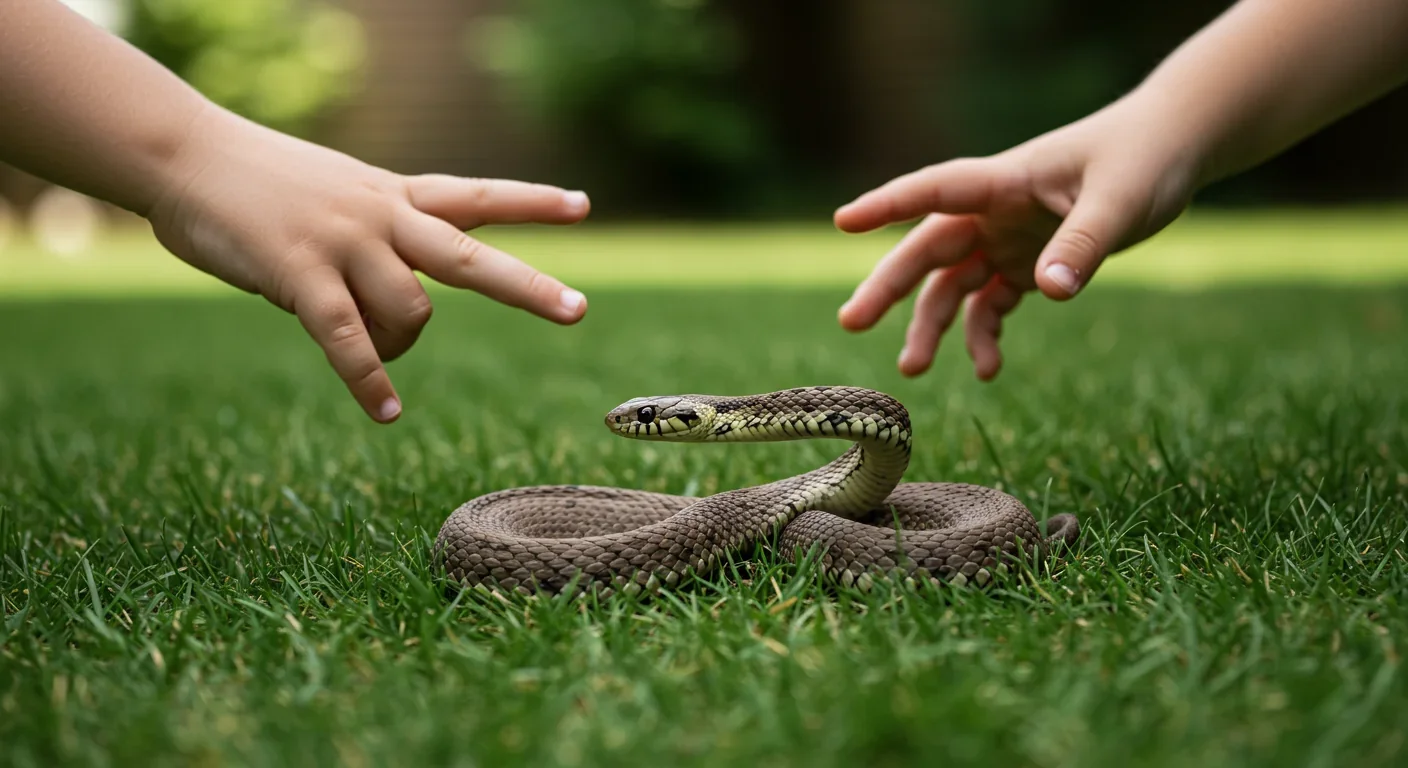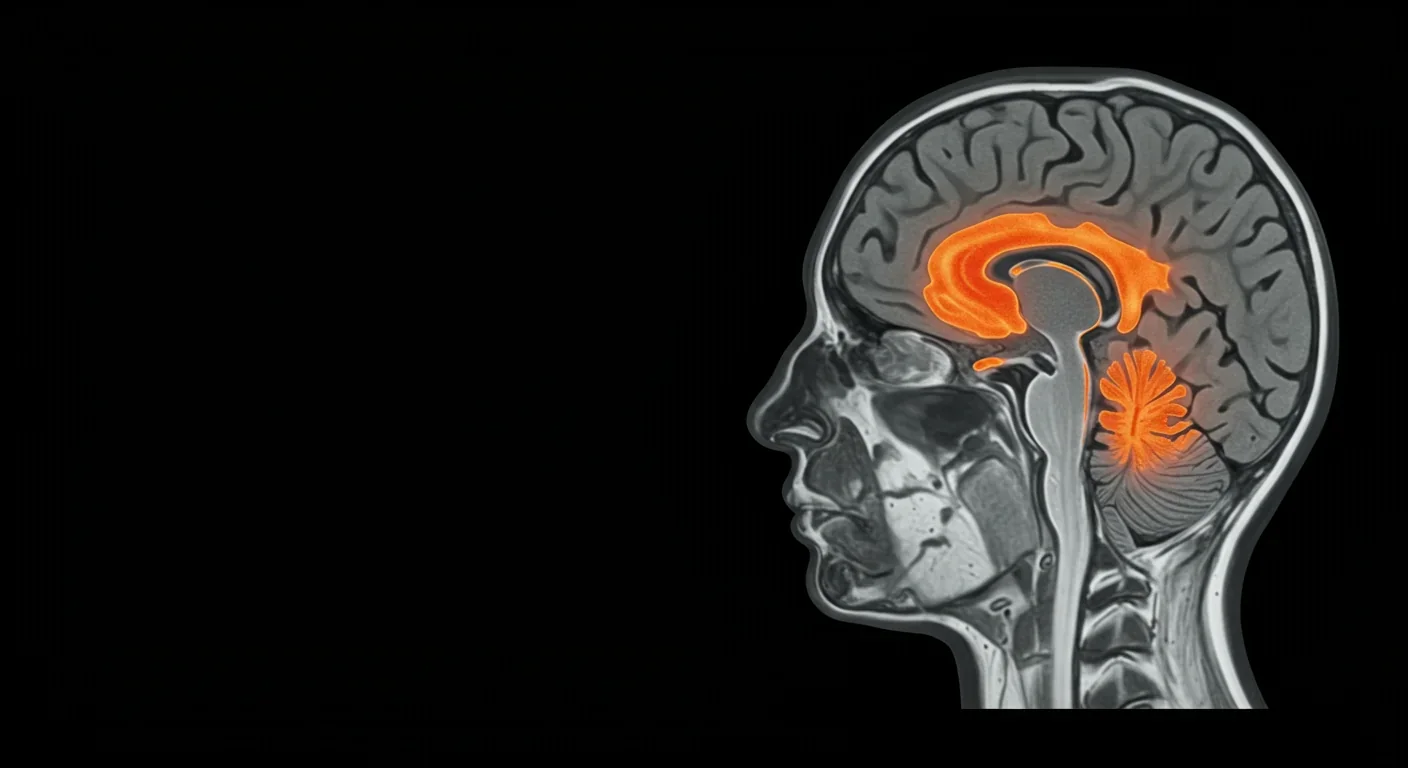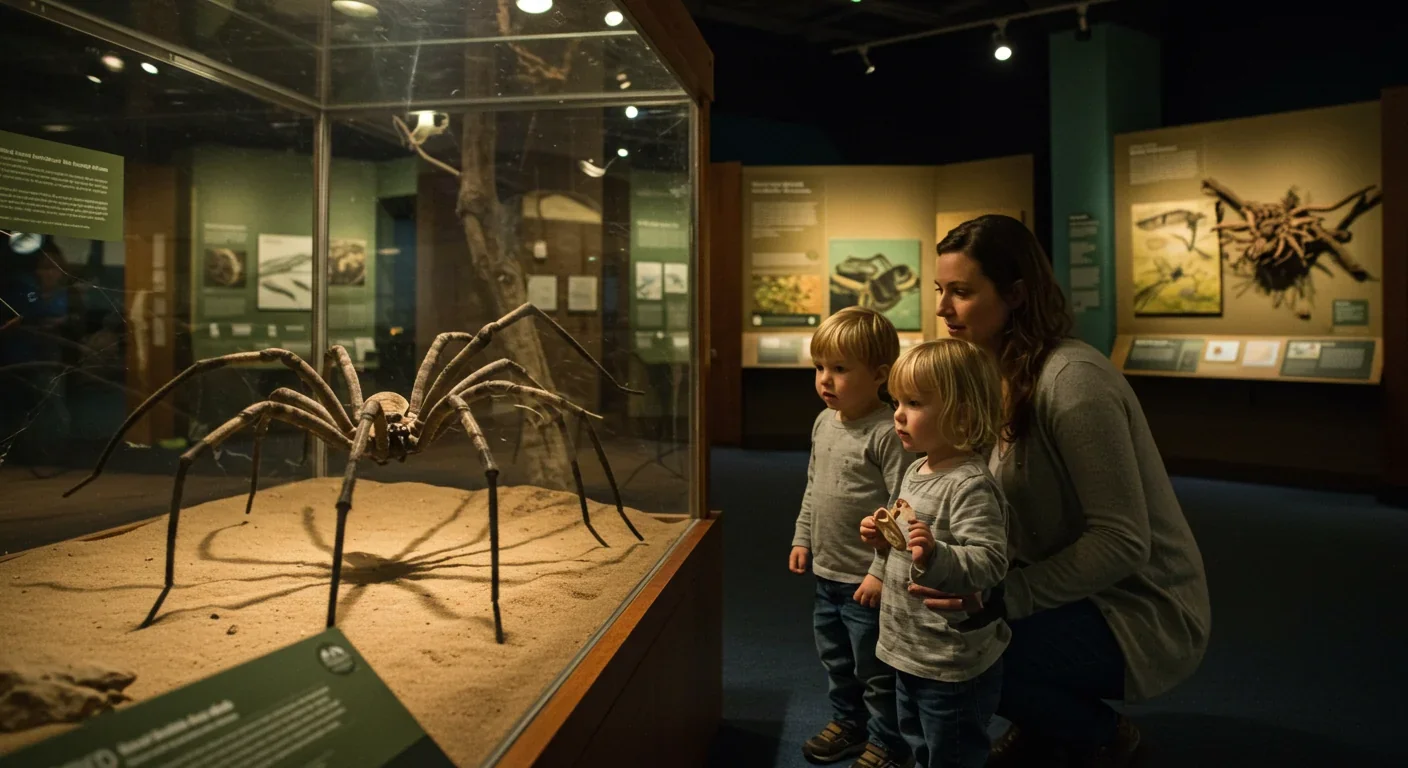Why Your Brain Is Hardwired to Lose Money

TL;DR: Humans rapidly learn fears of snakes and spiders through 'prepared learning'—an evolutionary mechanism shaped by millions of years of natural selection. Meanwhile, genuinely deadly modern threats like cars and cigarettes bypass our ancient threat-detection systems, creating a dangerous mismatch between evolved psychology and contemporary dangers.

A toddler reaches toward a garden snake, curious and unafraid. Minutes later, after watching their parent recoil in horror, that same child won't go near it. Meanwhile, that child rides daily in a car—statistically far more dangerous—without a flicker of concern. This lopsided fear response isn't random. It's the product of millions of years of natural selection that wired our brains to learn certain fears almost instantly while treating genuinely deadly modern threats with baffling indifference.
Scientists call this phenomenon prepared learning or biological preparedness, and it reveals one of evolution's most fascinating quirks: our fear-learning system is spectacularly good at protecting us from dangers that barely exist anymore, and dangerously slow at recognizing threats that kill millions.
Your ancestors who hesitated before approaching a coiled shape in the grass lived long enough to pass on their genes. The ones who didn't hesitate became lunch. Over countless generations, natural selection sculpted a brain that treats certain ancient threats—snakes, spiders, heights, darkness, enclosed spaces—as priority learning targets.
The mechanism is elegantly simple: humans are biologically prepared to rapidly associate fear with stimuli that posed consistent threats throughout our evolutionary history. We're not prepared to fear cars, guns, electrical outlets, or processed foods, even though these modern inventions kill exponentially more people than snakes ever did.
Consider the numbers. In the United States, snakes kill approximately 5 people per year, while car accidents kill over 40,000. Yet specific phobias of snakes affect roughly 1-3% of the population, while true phobias of automobiles are virtually nonexistent. Our fear-learning system hasn't caught up with the radical environmental changes of the past few thousand years.
Natural selection operates on a glacially slow timescale. From evolution's perspective, we're still living in the Pleistocene—automobiles have existed for roughly five generations, processed foods for ten, and guns for perhaps twenty.
This isn't a design flaw. It's a time lag. Natural selection operates on a glacially slow timescale, requiring hundreds of generations to meaningfully shift genetic predispositions. Modern threats have existed for mere evolutionary eyeblinks—automobiles for roughly five generations, guns for perhaps twenty, processed foods for ten. From evolution's perspective, we're still living in the Pleistocene.
The science behind prepared learning emerged from puzzling observations in clinical psychology. In the 1970s, psychologist Martin Seligman noticed that phobias showed a distinctly non-random distribution. People developed intense fears of spiders, snakes, heights, and enclosed spaces at far higher rates than they feared genuinely dangerous modern objects like cars or electrical outlets.
Seligman proposed that humans possess an evolved preparedness to rapidly learn fears of ancestral threats. Subsequent research has consistently validated this theory through multiple lines of evidence.
Laboratory studies demonstrate the effect with startling clarity. When researchers use classical conditioning to create fear responses, participants learn to fear snake or spider images much faster than neutral images like flowers or mushrooms—often after just a single pairing with an unpleasant stimulus.
Even more remarkably, these prepared fears resist extinction. While conditioned fears of neutral objects fade relatively quickly when the threat is removed, fears of evolutionarily relevant stimuli persist stubbornly, requiring many more extinction trials to diminish.
The effect appears across cultures, suggesting biological rather than purely cultural transmission. Studies of isolated populations with minimal snake exposure still show heightened fear responses to snake imagery, indicating the predisposition transcends individual learning experiences.

Inside your skull, two distinct neural pathways process potential threats, operating at vastly different speeds. Understanding this dual-track system explains why you jump at a curved stick on a hiking trail before your conscious mind even registers what you're seeing.
The fast track, often called the "low road", runs directly from your thalamus to your amygdala—the brain's fear center—bypassing the cortex entirely. This pathway processes crude sensory information almost instantly, triggering defensive responses within milliseconds. It's fast, automatic, and prioritizes speed over accuracy.
The slow track—the "high road"—routes sensory information through the visual cortex for detailed processing before reaching the amygdala. This pathway takes several hundred milliseconds longer but provides much more accurate threat assessment.
"For evolutionarily prepared stimuli like snakes, the fast track appears hypersensitive. Snake and spider images activate the amygdala more quickly and intensely than images of modern threats, even when participants aren't consciously aware they've seen anything threatening."
— fMRI research on neural fear responses
For evolutionarily prepared stimuli like snakes, the fast track appears hypersensitive. Research using functional brain imaging reveals that snake and spider images activate the amygdala more quickly and intensely than images of modern threats, even when participants aren't consciously aware they've seen anything threatening.
The amygdala itself contains specialized circuits for processing different types of threats. Some neurons respond preferentially to shapes resembling snakes, others to spider-like configurations, and still others to predator features like forward-facing eyes. These threat-detection templates appear to be partially hard-wired, fine-tuned by evolution to recognize dangers that were statistically likely to kill our ancestors.
Intriguingly, this rapid-response system can be triggered by extremely minimal cues. Studies show people can detect snake shapes in cluttered visual scenes faster than any other object type, even when the snake occupies only a tiny portion of their visual field. Our brains essentially run a continuous background scan for ancient threat signatures.
One of the most fascinating aspects of prepared learning is when these biases emerge. The research paints a more nuanced picture than simple "born afraid" narratives suggest.
Infants as young as six months old show heightened attention and arousal to spider and snake images compared to non-threatening animals. They don't show fear—they haven't learned that association yet—but they demonstrate stronger stress responses measured through pupil dilation and physiological arousal.
This suggests we're born with an attentional bias rather than innate fear. Babies come equipped with neural circuitry that says "pay close attention to these particular shapes and patterns," creating what researchers call a "prepared learning mechanism" rather than pre-programmed fear.
The actual fear develops through social learning. When infants observe adults reacting fearfully to snakes or spiders, they learn the appropriate emotional response with remarkable speed—often after witnessing a single fearful reaction. This rapid social transmission wouldn't work nearly as well for unprepared stimuli.
Show a toddler an adult expressing fear toward a snake, and the child will learn snake fear after minimal exposure. Show that same child an adult expressing identical fear toward a flower, and the child will require many more learning trials—if they develop flower fear at all.
Studies demonstrate this asymmetry elegantly. Show a toddler an adult expressing fear toward a snake, and the child will learn snake fear after minimal exposure. Show that same child an adult expressing identical fear toward a flower, and the child will require many more learning trials to develop flower fear—if they develop it at all.
The developmental window for acquiring prepared fears appears particularly sensitive during early childhood, roughly ages two through seven. During this period, children readily absorb these specific fears through observation, direct experience, or even verbal instruction. Once established, these fears often prove remarkably persistent.

From a survival perspective, prepared learning represents an elegant solution to an ancient computational problem: which threats should a developing organism prioritize learning about?
In ancestral environments, certain dangers were both lethal and reliably present across generations. Venomous snakes have coexisted with primates for over 50 million years, exerting consistent selection pressure throughout our evolutionary lineage. Spiders, heights, predators, darkness, and contaminated food sources similarly represented omnipresent threats.
For these recurring dangers, evolution could "afford" to partially pre-wire threat detection and rapid fear learning. The genetic cost was justified by the survival benefit. An individual born with enhanced snake-detection circuitry had better odds of surviving to reproductive age than someone who needed to learn snake danger entirely from scratch.
Crucially, prepared learning doesn't mean inevitable fear development. It means having neural architecture that makes certain fears easy to acquire and hard to extinguish. In environments with minimal exposure to prepared stimuli and no negative experiences, many people never develop these fears at all.
The system essentially gambles on historical probability. Throughout 99% of human evolutionary history, a predisposition to quickly learn snake fear carried minimal downside—you might be slightly more anxious in the wilderness—while offering potentially life-saving benefits. That same predisposition becomes maladaptive in modern urban environments where snake encounters are vanishingly rare.
Here's where evolutionary psychology gets unsettling: we're fundamentally unprepared to appropriately fear the things that actually kill us.
Automobiles cause over a million deaths globally each year, yet we climb into them daily without hesitation. Processed foods contribute to millions of deaths from cardiovascular disease and diabetes, yet we find them actively appealing rather than threatening. Firearms, electrical hazards, industrial chemicals—all these deadly modern inventions fail to trigger our prepared learning mechanisms.
The reason is tragically straightforward: these threats didn't exist during the environment of evolutionary adaptedness. Natural selection had no opportunity to shape fear-learning predispositions for dangers that emerged within the last few hundred years.
"Smoking kills more people annually than car accidents, alcohol, illegal drugs, murders, and suicides combined. Yet humans show no instinctive aversion to cigarette smoke—many find the early experiences mildly pleasant or neutral."
— Evolutionary psychology research on modern health risks
Consider cigarettes as a perfect case study. Smoking kills more people annually than car accidents, alcohol, illegal drugs, murders, and suicides combined. Yet humans show no instinctive aversion to cigarette smoke. Instead, many find the early experiences mildly pleasant or neutral, requiring substantial negative conditioning to develop appropriate caution. Our prepared learning system offers zero help.
This creates a profound mismatch between our evolved psychology and our statistical risk environment. We're neurologically equipped to survive the Serengeti but psychologically unprepared for industrialized modernity.
The implications extend beyond individual fears to societal risk perception. Democratic societies make collective decisions about which dangers to prioritize and regulate. When our evolved fear-learning biases systematically distort threat assessment, we risk allocating resources away from genuine statistical dangers toward emotionally compelling but objectively minor risks.
Understanding prepared learning transforms how psychologists approach anxiety disorders. Specific phobias—intense, irrational fears that interfere with daily functioning—show revealing patterns that align perfectly with evolutionary preparedness theory.
Epidemiological data demonstrates that phobias cluster around evolutionarily prepared stimuli. Animal phobias (particularly snakes and spiders), height phobia, enclosed space phobia, and darkness phobia account for the vast majority of specific phobias. Phobias of modern dangers like cars or electrical outlets are clinically rare, despite these objects being objectively more dangerous.
This distribution suggests phobias represent the pathological extreme of an otherwise adaptive system. Most people can modulate prepared fears appropriately through experience and reasoning. But in some individuals, prepared learning mechanisms become dysregulated, producing fear responses so intense and resistant to extinction that they meet diagnostic criteria for phobia.
The good news is that understanding the evolutionary basis of these fears improves treatment approaches. Cognitive-behavioral therapy for phobias now incorporates evolutionary insights, acknowledging that these fears aren't simply "irrational"—they're hyperactive versions of once-adaptive responses.
Exposure therapy, the gold standard treatment for specific phobias, works by repeatedly presenting the feared stimulus in safe contexts until extinction occurs. Knowing that prepared fears resist extinction helps clinicians set realistic expectations. Treatment for snake or spider phobias typically requires more extensive exposure than treatment for phobias of unprepared stimuli precisely because the underlying learning mechanisms are different.

So what do we do with this knowledge? We can't rewire millions of years of evolution, and waiting for natural selection to catch up isn't a viable strategy.
The first step is metacognitive awareness—understanding that your immediate emotional responses don't necessarily reflect actual danger levels. When your heart races at the sight of a spider while you barely notice stepping off a curb into traffic, recognizing the evolutionary mismatch helps you consciously calibrate your responses.
Education plays a crucial role, particularly for children. While we can't eliminate prepared learning biases, we can shape how they develop. Parents who model calm, measured responses to snakes and spiders while emphasizing genuine modern dangers help children develop more calibrated threat assessment.
For clinically significant fears, evidence-based treatments like exposure therapy reliably reduce phobic responses even for prepared fears. The process takes longer and requires more intensive intervention than treating unprepared fears, but success rates remain high.
Your gut feelings about danger are not objective threat assessments. They're ancient heuristics that worked beautifully in one environment and fail systematically in another. Knowing this provides the psychological space to question and override them.
On a societal level, understanding prepared learning should inform public health communication and risk regulation. When designing safety campaigns for genuinely dangerous modern threats, communicators must work harder to overcome the lack of prepared learning mechanisms. Repeated exposure, concrete statistics, vivid narratives, and visceral imagery help create the emotional weight that doesn't arise naturally.
The disconnect between evolved fear and actual danger isn't going away. We're fundamentally stuck with Pleistocene brains navigating an environment that would be utterly alien to our ancestors. But consciousness of this mismatch represents its own evolutionary development—our capacity for abstract reasoning and deliberate behavior modification.
Perhaps the most profound insight from prepared learning research is how it reveals the limits of intuition. Your gut feelings about danger are not objective threat assessments. They're ancient heuristics that worked beautifully in one environment and fail systematically in another. Knowing this doesn't eliminate the fear response, but it provides the psychological space to question and override it.
Every time you calmly coexist with a harmless spider while carefully checking your seatbelt before driving, you're exercising a uniquely human capability: using conscious knowledge to compensate for evolutionary lag. That's not a bug in our psychology—it's the feature that makes us adaptable despite our evolutionary inheritance.
The question isn't whether your brain will continue to over-react to snakes and under-react to cars. It will. The question is whether you'll let those Stone Age reactions dictate your actual behavior, or use your understanding of their origins to make more rational choices. That's the evolutionary challenge of being a conscious animal—not transcending your biology, but comprehending it well enough to work around its limitations.

MOND proposes gravity changes at low accelerations, explaining galaxy rotation without dark matter. While it predicts thousands of galaxies correctly, it struggles with clusters and cosmology, keeping the dark matter debate alive.

Ultrafine pollution particles smaller than 100 nanometers can bypass the blood-brain barrier through the olfactory nerve and bloodstream, depositing in brain tissue where they trigger neuroinflammation linked to dementia and neurological disorders, yet remain completely unregulated by current air quality standards.

CAES stores excess renewable energy by compressing air in underground caverns, then releases it through turbines during peak demand. New advanced adiabatic systems achieve 70%+ efficiency, making this decades-old technology suddenly competitive for long-duration grid storage.

Our brains are hardwired to see patterns in randomness, causing the gambler's fallacy—the mistaken belief that past random events influence future probabilities. This cognitive bias costs people millions in casinos, investments, and daily decisions.

Forests operate as synchronized living systems with molecular clocks that coordinate metabolism from individual cells to entire ecosystems, creating rhythmic patterns that affect global carbon cycles and climate feedback loops.

Generation Z is the first cohort to come of age amid a polycrisis - interconnected global failures spanning climate, economy, democracy, and health. This cascading reality is fundamentally reshaping how young people think, plan their lives, and organize for change.

Zero-trust security eliminates implicit network trust by requiring continuous verification of every access request. Organizations are rapidly adopting this architecture to address cloud computing, remote work, and sophisticated threats that rendered perimeter defenses obsolete.